Disclosure: This article contains affiliate links. We may earn a commission from purchases at no extra cost to you, which helps our travel content.
Standing atop the Mount of Olives looking east from Jerusalem, I could almost see it – that shimmer of blue in the distance marking the lowest point on Earth. The Dead Sea has beckoned travelers for millennia, and at just over an hour's journey from Jerusalem, it makes for the perfect day trip. After three visits in the past two years since making Kyoto my home base, I've navigated every possible route between these two iconic destinations. Whether you're a group of budget-conscious backpackers or a family seeking convenience, this analytical breakdown of transportation options will help you chart the most efficient course for your journey. The good news? You don't need a fancy tour package to experience this natural wonder – with some practical planning, even the most cost-conscious traveler can float effortlessly in these mineral-rich waters without sinking their budget.
Understanding Your Transportation Options
When plotting your course from Jerusalem to the Dead Sea, you're essentially navigating three main options: public bus, shared shuttle service, or private transportation. Each has its own financial and logistical considerations worth analyzing.
Public Bus (Route 486) remains the most economical choice at approximately 40-45 NIS per person each way (about $11-12 USD). Buses depart from Jerusalem's Central Bus Station roughly every hour from 8:30 AM until early afternoon. The journey takes approximately 1 hour and 20 minutes to Ein Bokek, the main tourist area with public beaches and hotels. The caveat: weekend service is limited, with no buses running on Shabbat (Friday afternoon through Saturday evening).
Shared Shuttle Services bridge the gap between economy and convenience, typically costing 70-100 NIS per person each way ($20-28 USD). These shuttles often pick up from central Jerusalem hotels and operate with greater frequency and flexibility than public buses, including some limited Shabbat service. I've had positive experiences with Abraham Tours' shuttle service, which allows online booking and confirmation.
Private Transportation options include taxis (approximately 350-450 NIS each way or $95-125 USD) or rental cars. For groups of 3-4 people, a rental car becomes surprisingly cost-effective when split among travelers. A basic economy car runs about 150-200 NIS per day ($42-56 USD) plus fuel costs, offering the flexibility to visit multiple Dead Sea sites and nearby attractions like Masada in a single day.
After crunching the numbers on my last three trips, I've found that for solo travelers, the public bus offers unbeatable value. For pairs, the shuttle service eliminates headaches without breaking the bank. For groups of three or more, splitting a rental car or taxi becomes the most economical choice while maximizing flexibility.
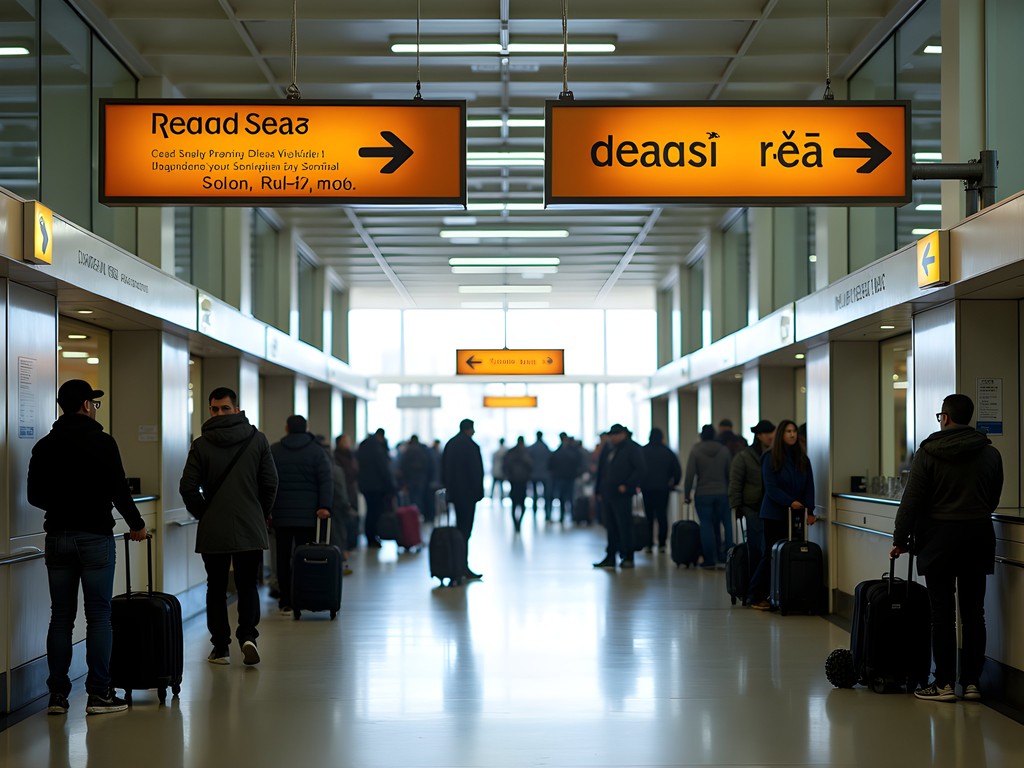
💡 Pro Tips
- Download the Moovit app for real-time bus schedules and route planning in Israel
- Purchase Rav-Kav transportation cards at Jerusalem Central Bus Station for slightly discounted fares
- If traveling on Fridays, plan to return before 3 PM when services begin reducing for Shabbat
The Budget Analyst's Breakdown: Costs & Value
Old habits die hard. Three decades as a municipal budget analyst have left me with an irrepressible urge to calculate cost-efficiency ratios for everything – including Dead Sea transportation options. Let me share my spreadsheet insights so you can make an informed choice based on your group size and priorities.
For Solo Travelers: - Public Bus: ~45 NIS each way (90 NIS round trip) - Shuttle Service: ~85 NIS each way (170 NIS round trip) - Taxi: ~400 NIS each way (800 NIS round trip)
For Groups of Four: - Public Bus: ~180 NIS round trip (45 NIS × 4 people) - Shuttle Service: ~680 NIS round trip (85 NIS × 4 people) - Taxi or Rental Car: ~800 NIS round trip (shared cost: 200 NIS per person)
While the public bus remains the clear economic winner, the value proposition shifts when factoring in convenience and time efficiency. On my first Dead Sea expedition, I chose the bus and spent nearly 3 hours waiting due to schedule changes and delays. On my most recent trip with friends from Kyoto, we split a rental car and gained an additional 2.5 hours of actual Dead Sea enjoyment plus the ability to visit multiple beaches.
For optimal protection during your Dead Sea adventure, I recommend packing a waterproof phone case. The salt water is roughly 10 times saltier than ocean water and will damage electronics instantly. I learned this lesson the expensive way when salt water corrosion rendered my previous smartphone useless after a splash.
Remember to factor in the entrance fees to beaches as well. Ein Bokek public beach is free, while other beaches like Kalia charge entrance fees (approximately 35-60 NIS per person). When traveling with a group, these additional costs should be considered in your transportation decision.

💡 Pro Tips
- Bring at least 2 liters of fresh water per person – the Dead Sea area is extremely hot and dehydration happens quickly
- Pack a change of clothes in a waterproof bag – Dead Sea water makes normal fabric stiff and uncomfortable
- Carry small Israeli currency (shekels) for bus fare as drivers don't always make change for large bills
Navigating the Bus System: A Step-by-Step Guide
For those choosing the public transportation route (as I did on my first Dead Sea expedition), here's my analytical breakdown of the process, informed by personal experience and the inevitable trial-and-error that comes with navigating foreign transit systems.
Step 1: Reach Jerusalem Central Bus Station
Located on Jaffa Road, the Central Bus Station (CBS) is accessible via Jerusalem's light rail system or by taxi. Allow extra time to navigate security checks at the entrance – typically 10-15 minutes during normal periods, but up to 30 minutes during peak tourist season.
Step 2: Purchase a Rav-Kav Card
Before buying your ticket, I recommend obtaining a reloadable Rav-Kav card from the service counter on Level 3. This rechargeable card offers slight discounts and eliminates the need to purchase individual paper tickets for each journey. The card itself costs 5 NIS (approximately $1.40 USD) and can be shared among group members for the same journey.
Step 3: Find the Correct Platform
Bus 486 to Ein Bokek/Dead Sea typically departs from Platform 5, but always verify this on the electronic display boards as platforms occasionally change. Announcements are made in Hebrew first, followed by English, but they can be difficult to hear in the busy terminal.
Step 4: Validate Your Journey
When boarding, tell the driver your destination ("Ein Bokek" is most common for Dead Sea access) and tap your Rav-Kav card on the reader. If using cash, exact change is appreciated though not strictly required.
Step 5: Track Your Journey
The bus makes several stops along the Dead Sea coast. Ein Bokek is approximately 1 hour and 20 minutes from Jerusalem. I recommend using the Google Maps offline maps with the Dead Sea region downloaded before your journey. Cell service can be spotty along parts of the route, and having offline access to maps helped me identify my stop without relying on announcements.
Step 6: Return Journey Planning
The last bus from Ein Bokek to Jerusalem typically departs around 5:00-5:30 PM (earlier on Fridays). I strongly advise checking the exact schedule for your travel date and arriving at the bus stop 15 minutes early. Missing the last bus means an expensive taxi ride back to Jerusalem – a navigational error I witnessed another traveler make that resulted in a 400 NIS unexpected expense.

💡 Pro Tips
- Take a screenshot of the bus schedule for your return journey as a backup
- Sit on the right side of the bus for the best views of the Judean Desert and Dead Sea on the outbound journey
- Bring motion sickness medication if you're sensitive – the route includes many switchbacks through the mountains
Shuttle and Tour Options: Convenience vs. Cost
For travelers seeking a middle ground between the economy of public buses and the convenience of private transportation, shuttle services and organized tours present viable alternatives. Having tried all options across my three Dead Sea journeys, I can offer a comparative analysis.
Abraham Hostel Shuttles operate daily shuttles from their Jerusalem location to the Dead Sea for approximately 85 NIS per person each way. The key advantage is their reliable schedule – even operating limited service during Shabbat when public transportation shuts down. Reservations can be made online or at their front desk, and you don't need to be a hostel guest to use their shuttle service. The shuttles typically depart at 9:00 AM and return at 4:00 PM, giving you about 5 hours at the Dead Sea.
Organized Day Tours combine transportation with additional experiences, usually including Masada and Ein Gedi along with the Dead Sea. These typically range from 250-350 NIS per person ($70-100 USD). While more expensive than DIY transportation, these tours efficiently package multiple destinations into a single day with an English-speaking guide. For time-constrained travelers, this option maximizes sightseeing value despite the higher price point.
Private Taxi Services can be arranged through your accommodation or apps like Gett Taxi. Expect to pay 350-450 NIS each way, though this becomes cost-effective for groups of 3-4 people. The primary advantage is complete flexibility – you determine departure times, which beaches to visit, and how long to stay at each location.
On my second Dead Sea trip, I opted for a private taxi shared with two fellow travelers I met at my Jerusalem guesthouse. We negotiated a full-day rate of 800 NIS (approximately $225 USD), which included stops at Masada, Ein Gedi nature reserve, and three hours at Kalia Beach. Split three ways, this worked out to roughly 267 NIS per person – more expensive than the public bus but considerably more efficient in terms of time utilization and sites visited.
For sun protection during your Dead Sea adventure, I highly recommend a wide-brimmed sun hat. The reflection off both the water and salt crystals intensifies UV exposure, and the Dead Sea region receives minimal cloud cover year-round. My weathered face bears testament to years of outdoor adventures before I became religious about sun protection.

💡 Pro Tips
- Book shuttle services at least one day in advance during high season (March-May and September-November)
- Confirm the exact pickup location and have a local contact number for the shuttle service
- For private taxis, negotiate and confirm the total price (including waiting time) before departing
DIY Driving: Rental Car Tips & Route Guidance
For my third and most recent Dead Sea expedition, I opted to rent a car with two friends visiting from Kyoto. This approach proved to be the sweet spot of flexibility and value for our small group. If you're considering this option, here's my practical navigation guide based on firsthand experience.
Rental Logistics:
Jerusalem offers numerous car rental agencies, with the best rates typically found by booking online 1-2 weeks in advance. We secured a compact automatic transmission vehicle for 180 NIS per day through a local agency. International agencies like Hertz and Avis generally charge 30-50% more but offer the convenience of English-speaking staff and more flexible pickup/drop-off options. Most agencies require a credit card for deposit (typically $200-300 USD hold) and your home country's driving license. An International Driving Permit is recommended but not strictly required.
Route Planning:
The most direct route from Jerusalem to the Dead Sea follows Highway 1 eastward, which transitions to Highway 90 running north-south along the Dead Sea shore. The journey covers approximately 55 kilometers (34 miles) and takes about 1 hour without stops. The road quality is excellent throughout, though the descent involves numerous switchbacks and significant elevation changes (Jerusalem sits at approximately 2,500 feet above sea level while the Dead Sea is 1,400 feet below sea level).
Navigation Considerations:
Cell service becomes intermittent along parts of the route, so I recommend downloading offline maps before departure. A phone mount proved invaluable for safely following directions while navigating the winding desert roads. I've found that GPS occasionally struggles with precise locations in this region, so noting key landmarks and junction numbers is a wise backup strategy.
Parking & Access:
Most Dead Sea beaches offer free parking, with Ein Bokek providing the most abundant spaces. Kalia Beach charges a modest parking fee (approximately 10 NIS) in addition to its entrance fee. During our visit, we easily found parking at mid-day, though I've heard that weekend mornings can become congested during peak season.
Fuel Planning:
Gas stations are limited between Jerusalem and the Dead Sea, with prices approximately 15-20% higher than in urban areas. I recommend filling your tank before leaving Jerusalem. Our compact car used approximately 1/4 tank for the round trip journey plus driving between several Dead Sea sites.
Security Considerations:
The route passes through portions of the West Bank, though the main highways are generally considered safe for tourists. As with any road journey in an unfamiliar region, I recommend traveling during daylight hours and keeping valuables out of sight when parking. We experienced no security issues during our trip, finding only courteous fellow drivers and the occasional curious ibex watching from the roadside cliffs.
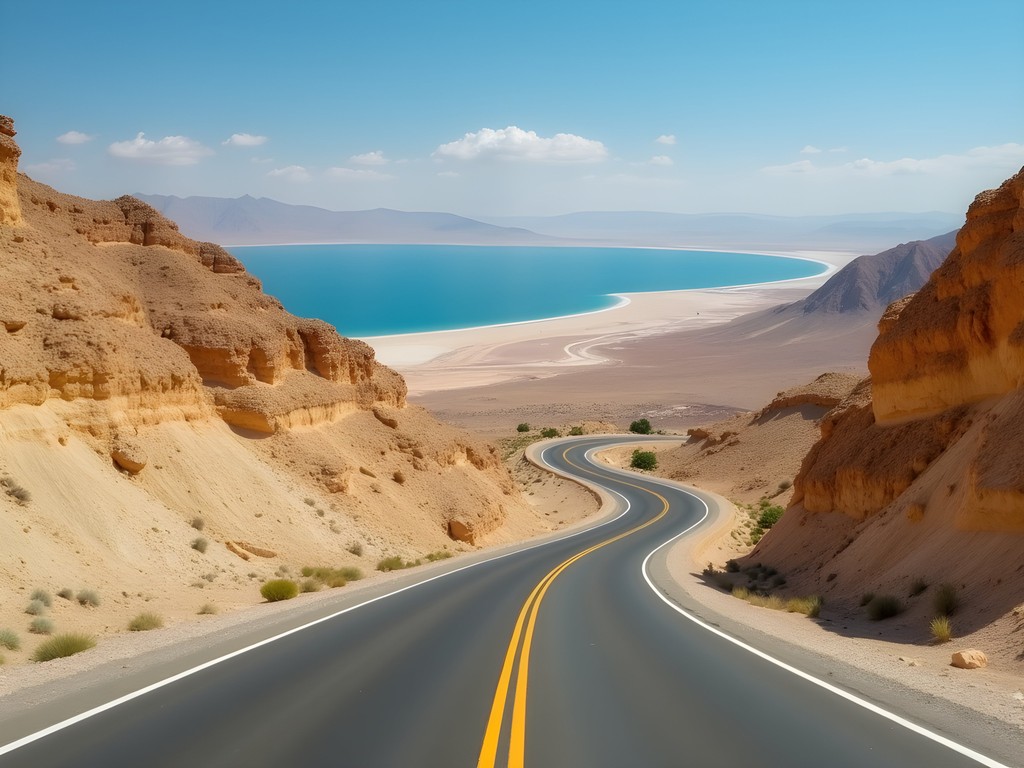
💡 Pro Tips
- Fill your gas tank in Jerusalem before heading out as service stations are limited along the route
- Bring small bills for entrance fees at paid beaches and nature reserves
- Set your GPS for 'Ein Bokek' rather than simply 'Dead Sea' for more accurate directions
Final Thoughts
As I floated effortlessly in the mineral-rich waters of the Dead Sea on my last visit, watching the Jordanian mountains shimmer in the distance, I was reminded that some journeys are worth every shekel spent getting there. Whether you choose the budget-friendly public bus, the convenience of a shuttle service, or the freedom of your own vehicle, the Dead Sea rewards all who make the effort to visit. The transportation option you select should align with your travel priorities – economy, flexibility, or convenience – but rest assured that all roads lead to one of Earth's most remarkable natural wonders. Like navigating life's second acts (something I know well), the journey from Jerusalem to the Dead Sea isn't about the perfect path, but finding the route that best suits your current circumstances. Safe travels, and don't forget to bring a good book – floating in the Dead Sea makes for the world's most buoyant reading experience!
✨ Key Takeaways
- Public bus 486 offers the most economical option at ~45 NIS each way but requires careful schedule planning
- For groups of 3+ people, sharing a taxi or rental car becomes cost-competitive while offering maximum flexibility
- Shuttle services provide a convenient middle ground, especially during Shabbat when public transportation is limited
- Always carry plenty of fresh water, sun protection, and a change of clothes regardless of transportation choice
📋 Practical Information
Best Time to Visit
year-round, though spring (March-May) and fall (September-November) offer the most pleasant temperatures
Budget Estimate
$30-100 per person depending on transportation choice
Recommended Duration
full day (8-10 hours including travel time)
Difficulty Level
Easy
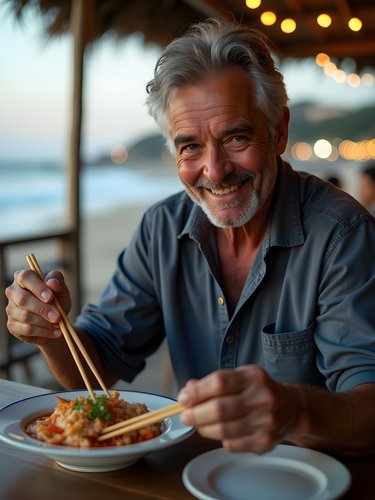

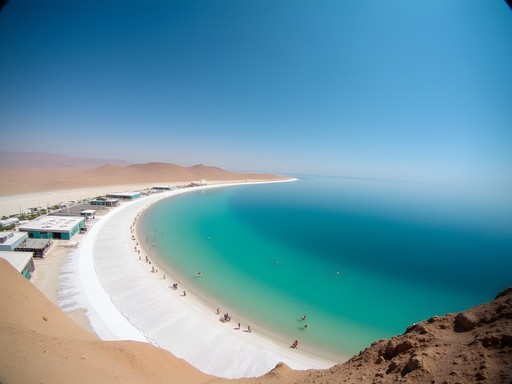
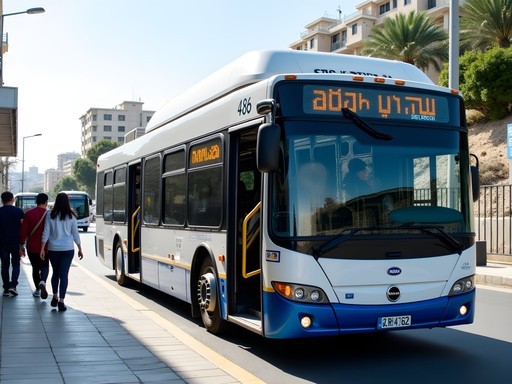












Comments
WorldWanderer
Those photos of the Dead Sea are incredible! Can't wait to float there myself!
John Hart
It's even more surreal in person! Make sure to get the classic 'reading a newspaper while floating' photo - it's a Dead Sea tradition!
Taylor Moreau
Excellent guide, John. One safety tip I'd add for those planning this journey: the road from Jerusalem to the Dead Sea drops over 1,200 meters in elevation and has some sharp turns. If you're prone to motion sickness, take medication before departing. I always bring my anti-nausea wristbands which work wonders without making me drowsy. Also worth noting that the best time to visit is either early morning or late afternoon, especially in summer when midday temperatures at the Dead Sea can reach a blistering 40°C/104°F. The contrast between Jerusalem's climate and the Dead Sea basin is quite remarkable!
happynomad
Good point about the elevation drop! My ears were popping the whole way down.
SoloTrekker88
Just got back from Israel and followed your advice on taking the bus. So much cheaper than the tours! One thing to note - the return schedule can be a bit unpredictable. Our bus back to Jerusalem was 30 minutes late, which had us a bit nervous as the sun was setting. Might be worth having a backup plan or taxi budget just in case. Also, the Ein Gedi beach area was closed for renovation when we visited (Nov 2025), so we ended up at Kalia Beach instead, which was nice but more commercial.
sunnybackpacker
Really appreciate this breakdown! The cost comparison chart is super helpful.
happyadventurer
Great guide John! I'm planning this trip for September and wondering if it's better to do the public bus or splurge on one of those shuttle services you mentioned? I'll be traveling solo if that makes a difference. Also, is it easy to find the bus stop at the Dead Sea for the return journey?
Taylor Moreau
Not the author, but I've done this trip several times. If you're solo, the bus is perfectly fine and will save you about 200-300 NIS. The return bus stop is right where they drop you off at Kalia Beach. Just check the schedule in advance as they don't run very frequently in the afternoon.
happyadventurer
Thanks Taylor! That's super helpful. I'll go with the bus option then and make sure to check the return schedule.
happynomad
Just got back from this exact trip last week! We followed your bus instructions and saved so much money compared to the tours our hotel was pushing. That 486 bus was actually pretty comfortable, though it does fill up quickly in the morning. One tip for others: bring LOTS of water. We underestimated how quickly you get dehydrated at the Dead Sea, especially if you're coming from the Jerusalem hills where it's cooler.
sunnybackpacker
How long did the bus take? Trying to plan my day.
happynomad
About 1 hour 15 minutes each way. Left Jerusalem around 8:30am, got there by 10am, and we had plenty of time to float and visit a few sites before heading back on the 3pm bus.
beachexplorer
Has anyone tried the shuttle services mentioned in the article? The convenience sounds nice but I'm wondering if it's worth the extra cost compared to the public bus. Also, do most of these tours include time at Masada or just the Dead Sea?
TravelBug42
We did the Abraham Tours shuttle last month and it was great. More expensive than the bus but they stop at Masada for 2 hours and then give you 3 hours at Kalia Beach. The guide was super informative and handled all the logistics. Worth it if you want to see both sites without hassle!
beachexplorer
That sounds perfect, thanks! Did you have enough time at each stop?
TravelBug42
Masada felt a bit rushed if you want to see everything, but the Dead Sea time was plenty. Just be prepared for an early start - we had to be at the meeting point by 7:15am!
Jennifer Thomas
I did this exact trip last year and can confirm the 444 bus is the way to go if you're on a budget! One tip I'd add - sit on the right side of the bus when heading to the Dead Sea for the best views of the desert landscape. The descent is pretty dramatic and beautiful. I left Jerusalem around 7am to beat the crowds and had almost the entire beach to myself until about 10:30. Oh, and don't forget to bring water shoes! The salt crystals on the shore can be really sharp. I learned that the hard way and had to buy overpriced ones at the gift shop.
beachexplorer
Thanks for the tip about water shoes! Adding that to my packing list now.
Jennifer Thomas
No problem! I use my water shoes for all my beach trips now. They're perfect for rocky or salty shores and fold up small in your bag.
photolife522
Just what I needed! Planning a trip to Israel next month and was wondering how to get to the Dead Sea. Thanks for the breakdown on costs!
John Hart
Glad it helps! Let me know if you have any specific questions about the journey.
photolife522
Is October a good time to visit? Worried about the heat!
John Hart
October is actually perfect! The brutal summer heat has subsided but it's still warm enough to enjoy the water. Just bring plenty of water and sunscreen - there's very little shade at the beaches.
journeymood
Those photos of the Dead Sea are incredible! Can't wait to float there myself.
Venture X
Premium card with 2X miles, $300 travel credit, Priority Pass